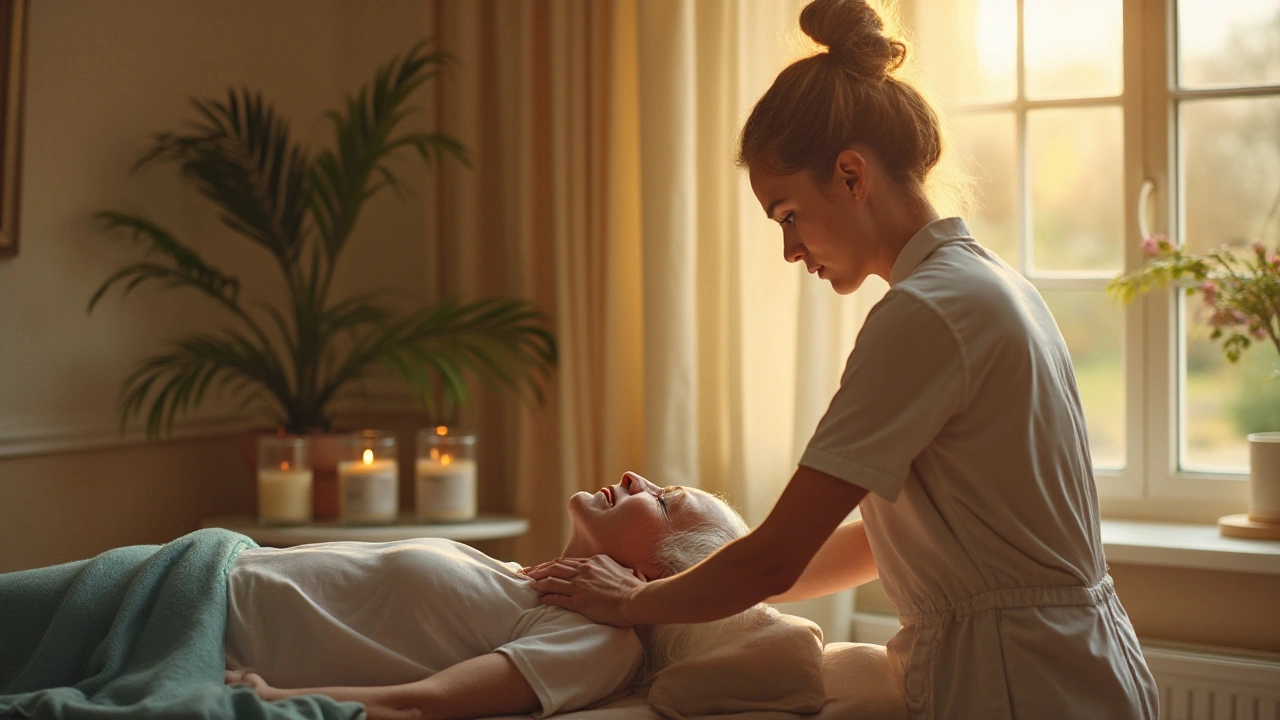Comfort care: gentle massage and hands-on therapies that actually help
Comfort care isn’t just for hospice. It’s a set of gentle, practical approaches—like palliative massage, Amma, warm stone work, and subtle movement therapies—that reduce pain, ease stress, and help people feel human again. If you or someone you care for needs softer touch, less jargon, and real relief, this page pulls together what to expect and how to get started.
Who benefits and when to choose comfort care
Think of comfort care when pain, anxiety, sleep trouble, or limited mobility make daily life harder. People with chronic pain, recovering from surgery, living with advanced illness, or just worn out from stress often see quick wins. For example, palliative massage can relieve muscle tension and nausea in late-stage care, while Amma or warm-stone sessions help athletes recover faster after workouts. If a treatment feels too rough or leaves you sore, comfort care options are a better fit.
Want something gentle but effective? Try Ortho-Bionomy or Feldenkrais for movement and pain reduction, or trigger-point work for tight spots. Traditional methods like hilot or Lomi Lomi offer a cultural, rhythmic approach that many find deeply calming.
How a session usually goes and smart safety tips
A typical comfort-care session starts with a short chat about your needs, meds, and any limits. Sessions are often shorter and include more pauses than deep-tissue work. Therapists focus on comfort: easy positioning, frequent check-ins, and adapting pressure. Expect breathing prompts, light stretching, and techniques that encourage relaxation rather than aggressive force.
Safety first: always tell the therapist about blood thinners, recent surgeries, cancer diagnoses, or fragile skin. Get medical clearance if you have deep vein thrombosis risk, unstable fractures, or active infections. Licensed practitioners will know when to avoid certain areas like tumors or fresh wounds. If you’re unsure, ask directly: "Have you worked with clients with my condition? What adjustments do you make?" Good therapists will be clear and practical.
At home you can add simple comfort care: warm compresses for tight muscles, short self-massage for shoulders and calves, gentle range-of-motion moves, and a few acupressure points for headaches or nausea. Even five minutes of slow breathing with light neck strokes can lower stress and help sleep.
Finding a therapist: check hospice programs, community clinics, or massage therapists who list palliative, geriatric, or sports experience. Read reviews and ask about training—many skilled practitioners have extra courses in palliative care, oncology massage, or somatic methods like Hellerwork or Rolfing. Insurance or community programs sometimes cover parts of comfort care—ask before you book.
Comfort care is practical: less pain, better sleep, and a calmer mind. Try one short session, ask simple questions, and notice small changes. Often those small changes add up to big relief.

Enhancing Comfort with Palliative Massage for Pain Relief
Palliative massage offers a gentle approach to alleviate pain and improve comfort for individuals dealing with serious illnesses. This form of therapy focuses on enhancing the quality of life through the soothing power of touch. By addressing both physical and emotional pain, palliative massage provides relief and relaxation in a compassionate manner. It integrates various techniques to accommodate individual needs and preferences, making it a versatile tool in comprehensive palliative care.
Categories
- Health and Wellness (148)
- Alternative Therapies (86)
- Massage Therapy (40)
- Travel and Culture (15)
- Beauty and Skincare (9)
- Holistic Health (8)
- Health and Fitness (5)
- Spirituality (5)
- Other (2)
- Personal Development (2)
Popular Articles



